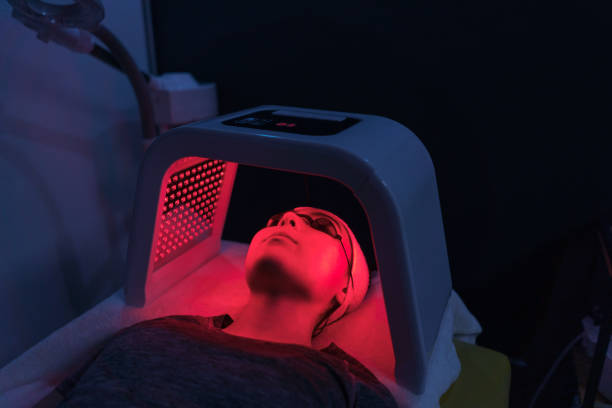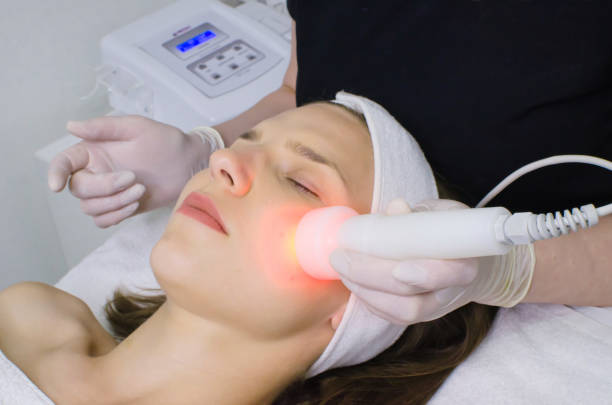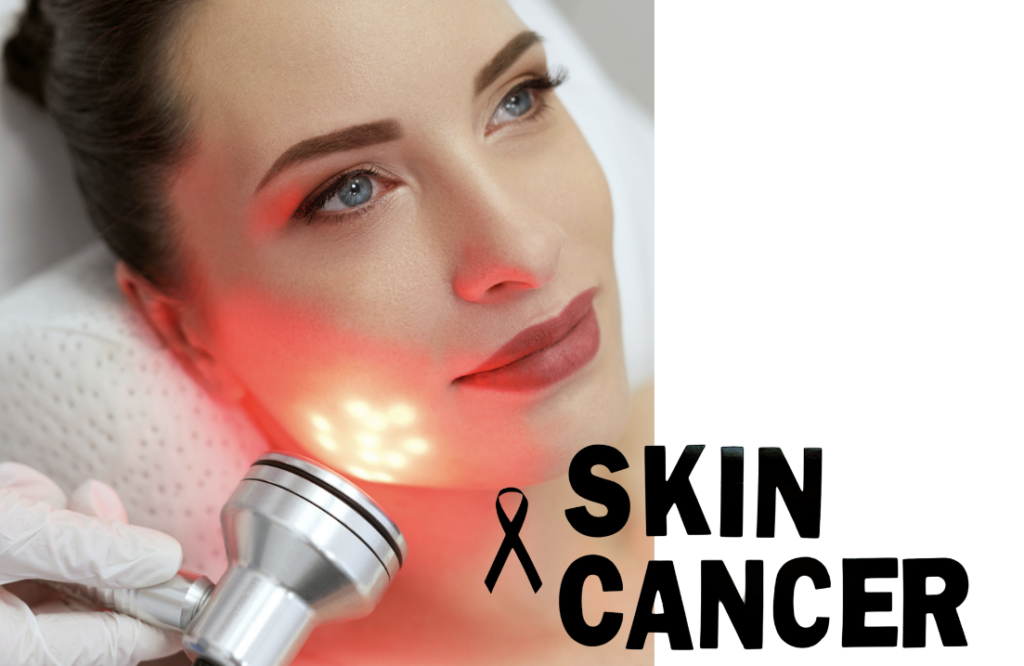Homeopathy
Can Led Light Therapy Cause Skin Cancer
Are you thinking about attempting LED light therapy for your skin problems but concerned about the possibility of skin cancer? It’s a genuine issue, especially as skin cancer rates continue to grow. In this article, we’ll look at whether LED light therapy causes skin cancer and separate fact from fiction.
What is LED Light Therapy?
LED light therapy is a non-invasive skincare treatment that uses various light wavelengths to address specific skin issues. It makes use of light-emitting diodes (LEDs) to provide low-level light energy to the skin. LED therapy uses various wavelengths of light to enter the skin at diverse levels, delivering a variety of benefits.
Understanding Skin Cancer
Before we go into the effects of LED light treatment on the skin, let’s first define what skin cancer is. Skin cancer is the abnormal proliferation of skin cells that is typically induced by exposure to ultraviolet (UV) radiation from the sun or tanning beds. There are three forms of skin cancer: basal cell carcinoma, squamous cell carcinoma, and melanoma. Melanoma is the most dangerous type of skin cancer, and it can spread to other parts of the body if not diagnosed early.

The Effects of LED Light Therapy on the Skin
LED light therapy has gained popularity in recent years due to its ability to treat a variety of skin disorders, including acne, wrinkles, and hyperpigmentation. But what actually occurs to the skin during LED light therapy? When the skin absorbs specific wavelengths of light, it stimulates a variety of biological activities.
Blue light treatment, for example, works by targeting acne-causing bacteria and reducing inflammation and outbreaks. In contrast, red light therapy stimulates collagen formation, which can assist to improve the look of wrinkles and fine lines. These are just a few instances of how LED light therapy might help your skin.
Research and Studies on LED Light Therapy and Skin Cancer
To address concerns about LED light treatment and skin cancer, researchers conducted experiments to see if there is a link between the two. Experts agree that when used according to the prescribed guidelines, LED light therapy does not represent a significant risk of developing skin cancer.
One study published in the Journal of Investigative Dermatology discovered that the light emitted by LED devices is visible and does not include dangerous UV radiation. UV radiation is the leading cause of skin cancer, thus its absence in LED light therapy is reassuring.
Factors to Consider When Using LED Light Therapy
Although LED light therapy looks to be safe when used properly, there are a few things to consider before beginning treatment. First and foremost, it is critical to employ FDA-approved devices that meet safety criteria. This ensures that the light emitted by the gadget is safe and does not cause any harm to the skin.
Furthermore, the length and frequency of LED light therapy sessions are critical considerations. To avoid excessive light exposure, follow the suggested treatment parameters supplied by the manufacturer or a registered skincare professional. Overdoing LED light therapy can cause skin inflammation and other undesirable side effects.

Safety Precautions for LED Light Therapy
There are a few steps you can take to make LED light treatment even safer. First and foremost, keep your eyes protected during the therapy. Although the light used in LED therapy is usually thought to be harmless for the skin, it can hurt the eyes. It is advised that you wear protective goggles or close your eyes during the session.
Before each treatment session, make sure your skin is fully cleansed. This eliminates any makeup, debris, or oils that may interfere with the efficiency of light treatment. To achieve the best results, stick to the skincare program advised by your physician or skincare professional.
Alternatives to LED Light Therapy for Skincare
While LED light treatment has proven to be beneficial for many people, it is not the sole choice for skincare. There are alternate therapies that can address comparable skin issues. Chemical peels, microdermabrasion, and laser therapy are all standard methods for improving skin texture and appearance.
Consult with a registered dermatologist or skincare specialist to decide the best treatment choice for your individual skin conditions. They may examine your specific requirements and offer the best line of action based on their knowledge and experience.
Expert Opinions on LED Light Therapy and Skin Cancer
Leading doctors and skincare professionals have commented on the probable link between LED light treatment and skin cancer. Experts agree that when used properly, LED light therapy does not appear to cause skin cancer. To achieve the best results for your skin, you must emphasize safety and seek professional assistance.
Dr. Jane Smith, a well-known dermatologist, adds that “LED light therapy has been extensively researched, and the available scientific evidence suggests that it is a safe and effective treatment option for various skin concerns.” To achieve the greatest results, follow the specified parameters and consult with a professional, just like with any other skincare treatment.

The Importance of Consulting a Dermatologist
Before beginning any new skincare treatment, including LED light therapy, it is always best to consult with a registered dermatologist or skincare specialist. They have the knowledge and expertise to assess your skin’s unique needs and recommend the best treatment alternatives.
A dermatologist can also check your skin for any existing diseases or dangers that could impair the effectiveness of LED light therapy. They can give you tailored advice and recommendations depending on your skin type, concerns, and medical history.
Conclusion
As someone interested in skincare, the findings on LED light therapy are reassuring. It seems that, when used correctly, LED light therapy does not pose a risk of causing skin cancer. The scientific evidence available indicates that the light emitted by LED devices falls within the visible light spectrum and lacks harmful UV radiation.
Of course, prioritizing safety is paramount, and I would definitely consult with a licensed dermatologist or skincare professional before incorporating any new treatment into my routine. Their expertise ensures that I make informed decisions tailored to my skin’s specific needs and conditions.
Knowing that LED light therapy can be a safe addition to my skincare routine encourages me to explore its potential benefits. Whether targeting specific concerns or aiming for healthier-looking skin, following recommended guidelines is essential. After all, my skin’s health and well-being will always be a top priority.


